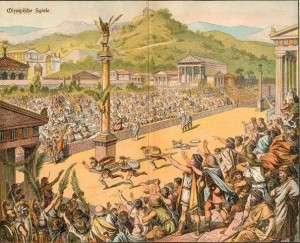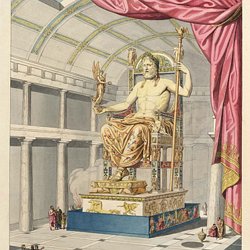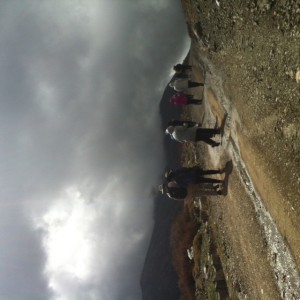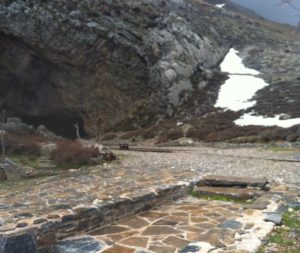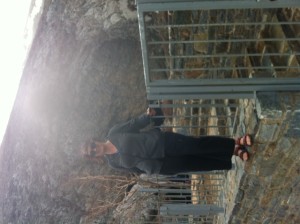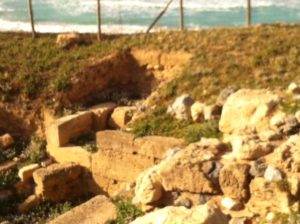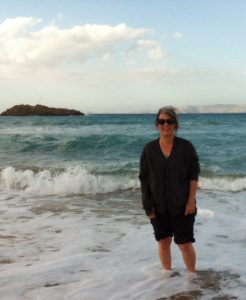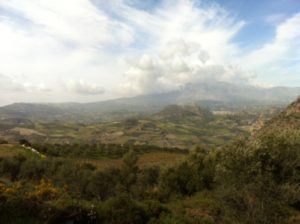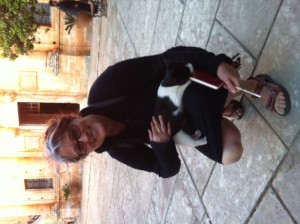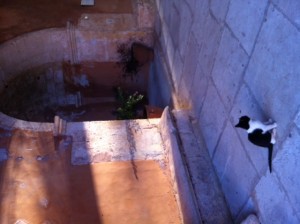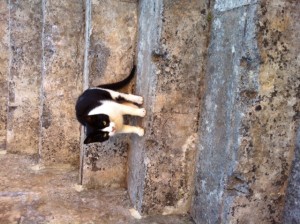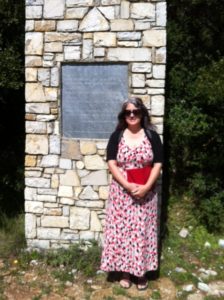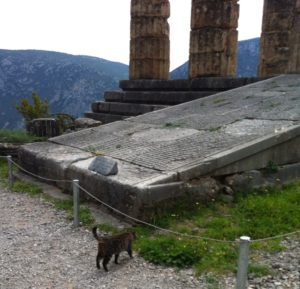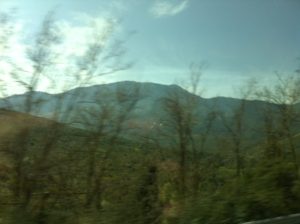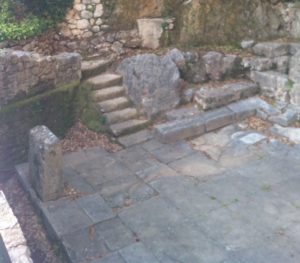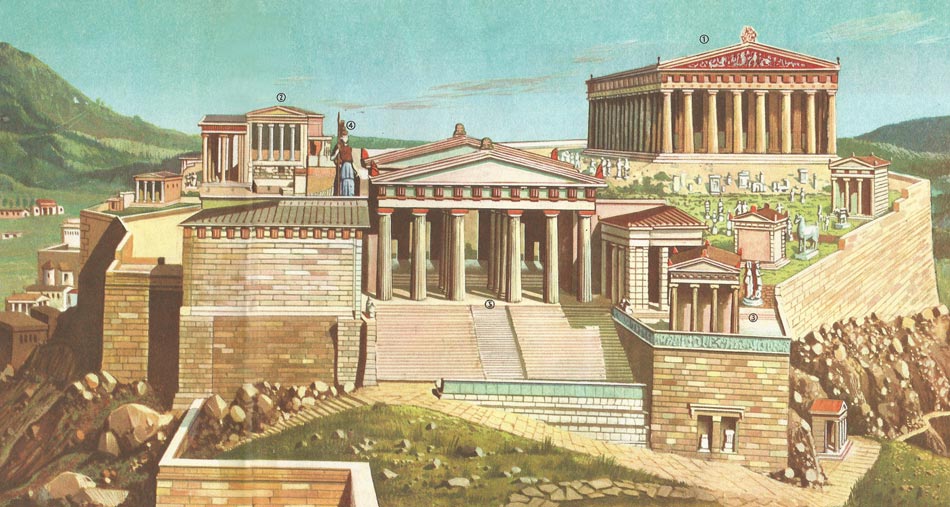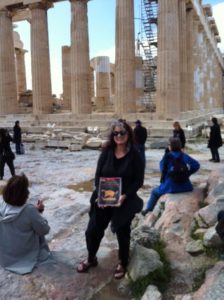Listen to my podcast on Marathon: Episode #41: Marathon
THE AGORA AT ATHENS
Today started with Athens cordoned off for the annual half Marathon, with the starting and finish line right outside the hotel. So fitting for the day when we were to visit Marathon, I thought!
 But everything, I have discovered, on this magical trip has been planned intentionally, down to the breathtaking Vernal Equinox sunset at the Temple of Poseidon at day’s end. Our first stop was the ancient Agora, where law courts, temples, shrines, shops, a library, and performance spaces were built to accommodate the lively daily business of Athens. Most important of all citizen activities was voting, for it was here, in the Bouleuterion, where we find the very birthplace of democracy.
But everything, I have discovered, on this magical trip has been planned intentionally, down to the breathtaking Vernal Equinox sunset at the Temple of Poseidon at day’s end. Our first stop was the ancient Agora, where law courts, temples, shrines, shops, a library, and performance spaces were built to accommodate the lively daily business of Athens. Most important of all citizen activities was voting, for it was here, in the Bouleuterion, where we find the very birthplace of democracy. Here, the great orators spoke to the people in support of various issues of concern to the community. Here, at the Bouleuterion, Miltiades proposed his plan to head off the Persians at Marathon.
Here, the great orators spoke to the people in support of various issues of concern to the community. Here, at the Bouleuterion, Miltiades proposed his plan to head off the Persians at Marathon. Â Citizens voted in favor and headed over to the arsenal where officials distributed the weapons the citizen soldiers carried through the mountains to the coast at Marathon. Later, at this very spot, Pheidippides collapsed in front of the people, gasping in his last breath the message of victory.
 Citizens voted in favor and headed over to the arsenal where officials distributed the weapons the citizen soldiers carried through the mountains to the coast at Marathon. Later, at this very spot, Pheidippides collapsed in front of the people, gasping in his last breath the message of victory.
MARATHON
Our tour continued over to the battlefield where the 192 who fell defending their cultural and community lie beneath the soros (burial mound) at Marathon. Why was this battle so important?
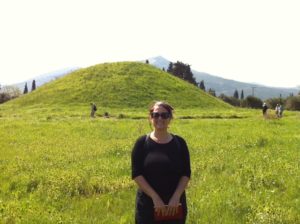
Because if those brave citizen soldiers had failed in their endeavor, democracy, that unique experiment in community governance, would have been extinguished under Persian subjugation and Western civilization as we know it would have a very different shape.
SOUNION
We ended our day at the Temple of Poseidon at Sounion, high on the cliffs above the Aegean. Professor Patrick Hunt, our leader, poured a libation (from bottled water!) to the god of the sea as the last rays of sun shot through the clouds on this first day of spring. 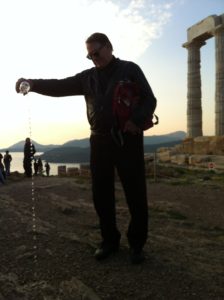 Menelaus, on his way home from the Trojan War, stopped here, and King Aegeus, the father of Theseus, waited here for news of his son’s quest to slay the Minotaur. A truly mythical end to a significant day!
Menelaus, on his way home from the Trojan War, stopped here, and King Aegeus, the father of Theseus, waited here for news of his son’s quest to slay the Minotaur. A truly mythical end to a significant day!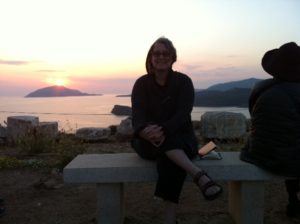
HELLO ROOM 5! This section is addressed to you!
Food I Ate Today: Baked feta (sheep’s cheese) with tomatoes and onion.
I Wonder: I wonder how cheese is made.
Lesson and Activity: Voting in America is a very important duty. Find out how we vote and what it takes to cast an informed vote. Here is a photo of ancient Greek ballots: they scratched their choice onto pot sherds.
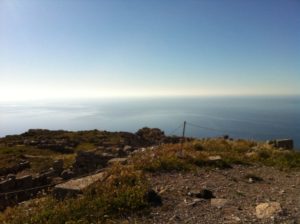
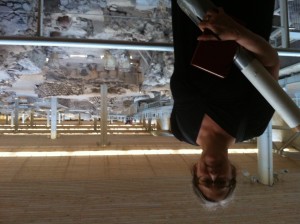

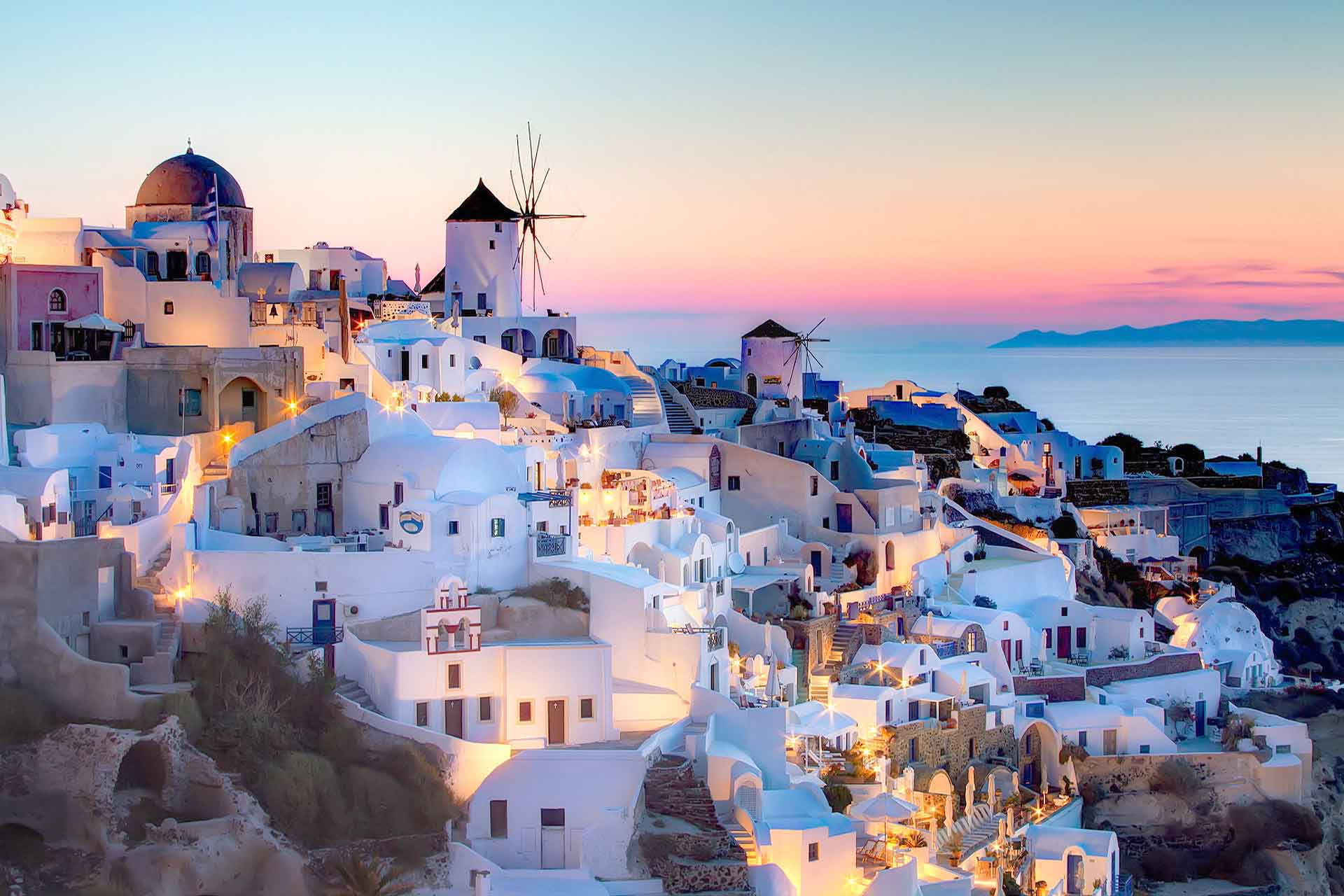
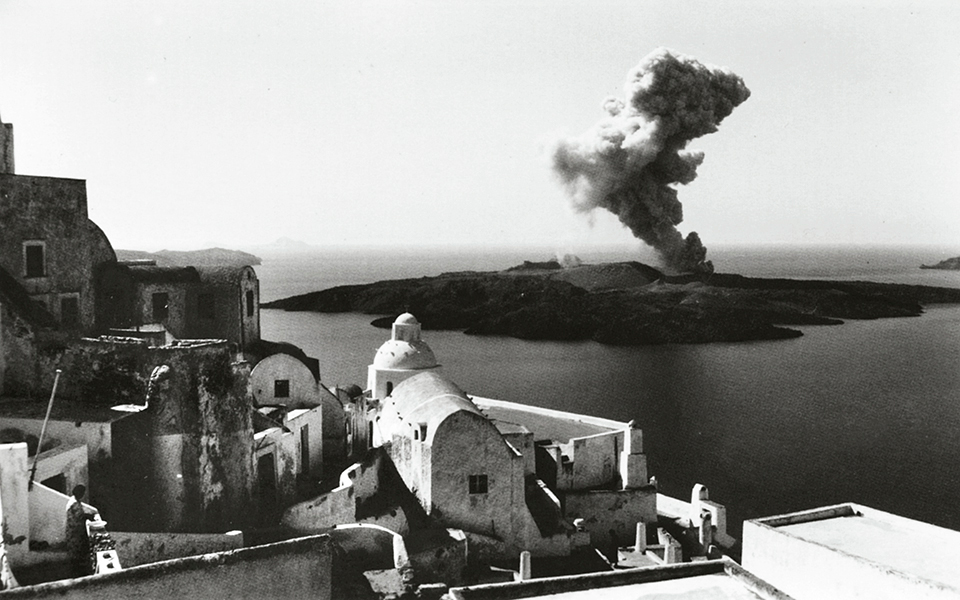

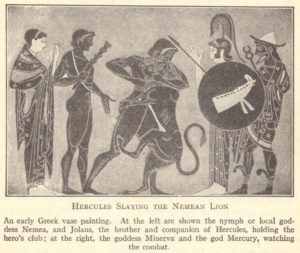 Our next stop on the tour was Nemea, the place where Hercules (Heracles) wrestled the lion. You always see Hercules with his club and lionskin. Stephen Miller, former director of the
Our next stop on the tour was Nemea, the place where Hercules (Heracles) wrestled the lion. You always see Hercules with his club and lionskin. Stephen Miller, former director of the 

